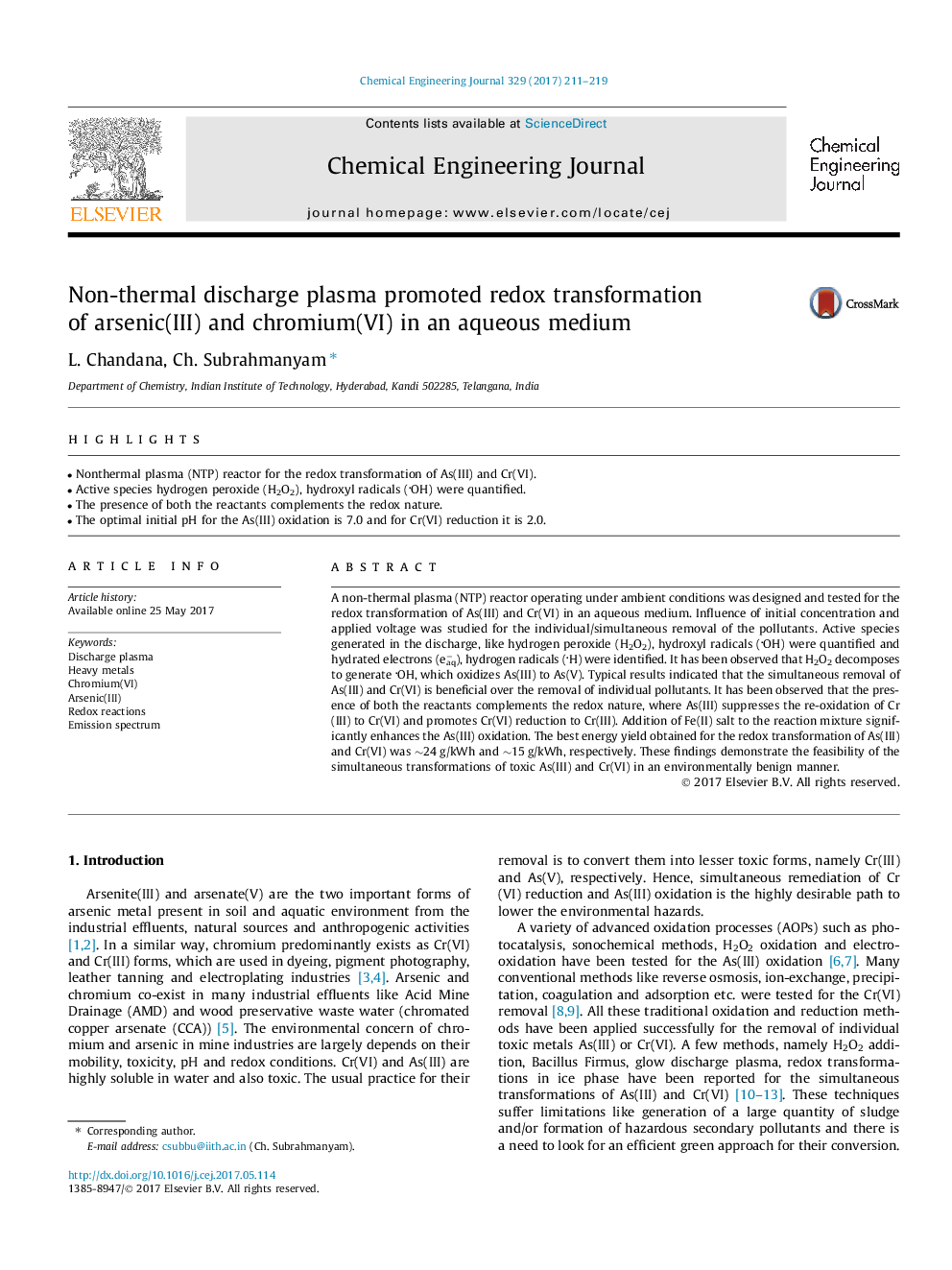| Article ID | Journal | Published Year | Pages | File Type |
|---|---|---|---|---|
| 6465412 | Chemical Engineering Journal | 2017 | 9 Pages |
â¢Nonthermal plasma (NTP) reactor for the redox transformation of As(III) and Cr(VI).â¢Active species hydrogen peroxide (H2O2), hydroxyl radicals (OH) were quantified.â¢The presence of both the reactants complements the redox nature.â¢The optimal initial pH for the As(III) oxidation is 7.0 and for Cr(VI) reduction it is 2.0.
A non-thermal plasma (NTP) reactor operating under ambient conditions was designed and tested for the redox transformation of As(III) and Cr(VI) in an aqueous medium. Influence of initial concentration and applied voltage was studied for the individual/simultaneous removal of the pollutants. Active species generated in the discharge, like hydrogen peroxide (H2O2), hydroxyl radicals (OH) were quantified and hydrated electrons (eâaq), hydrogen radicals (H) were identified. It has been observed that H2O2 decomposes to generate OH, which oxidizes As(III) to As(V). Typical results indicated that the simultaneous removal of As(III) and Cr(VI) is beneficial over the removal of individual pollutants. It has been observed that the presence of both the reactants complements the redox nature, where As(III) suppresses the re-oxidation of Cr(III) to Cr(VI) and promotes Cr(VI) reduction to Cr(III). Addition of Fe(II) salt to the reaction mixture significantly enhances the As(III) oxidation. The best energy yield obtained for the redox transformation of As(III) and Cr(VI) was â¼24Â g/kWh and â¼15Â g/kWh, respectively. These findings demonstrate the feasibility of the simultaneous transformations of toxic As(III) and Cr(VI) in an environmentally benign manner.
